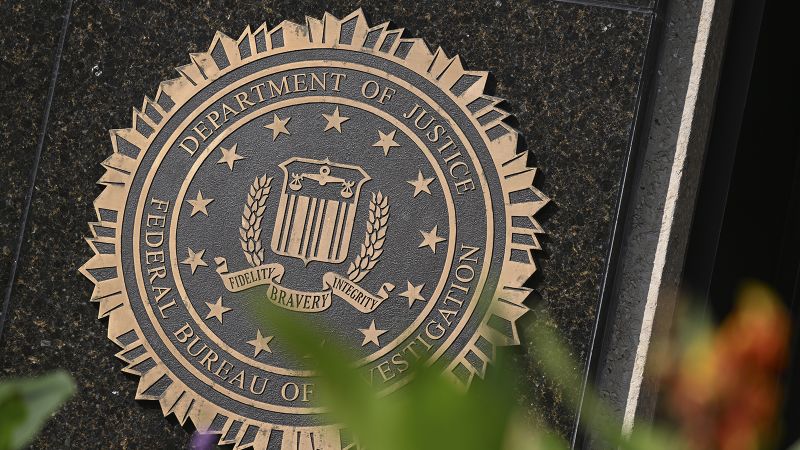
Fact Check Analysis: Justice Department Pressure on FBI Agents in Connection to January 6 Cases
This fact check was submitted by one of our subscribers, who was concerned about potential misinformation and hidden bias in the article. Subscribers like you can also submit fact-check requests for free, and we’ll publish the results after careful review.
Original Article: Read it here on CNN
The article titled ‘Time for me to dig in’: Justice Department puts pressure on FBI agents who worked on January 6 cases, published by CNN on February 3, 2025, raises concerns about the Justice Department’s actions toward FBI agents who participated in investigating the January 6, 2021, Capitol riot. Below, we break down the article to identify instances of potential misinformation, missing context, and bias.

Key Misinformation, Missing Context, and Bias Identified
1. Misleading Attribution to “Trump’s Justice Department” in 2025
The article mentions, “CNN has reported that President Donald Trump’s Justice Department is considering expanding its purge of bureau personnel.” This statement is misleading because Donald Trump is not the current president in 2025, and his administration ended on January 20, 2021. Referring to the Justice Department as “Trump’s Justice Department” seems to conflate past events with the present, potentially misleading the reader into believing he has direct control over the DOJ’s current actions. This phrasing may create confusion about the timeline and authority of his administration.
2. No Verification of “Mass Firings” Allegation
The article opens with an alarming claim that the DOJ’s questionnaire is “meant to be a precursor to mass firings.” However, the authors fail to provide concrete evidence to substantiate this claim. While concerns from the FBI Agents Association about potential repercussions are quoted, no official statement from the DOJ clarifying the intent behind the questionnaire is included. This omission leaves the assertion speculative and lacking critical context.

3. Lack of Counterpoints or DOJ Commentary
The article heavily leans on perspectives critical of the DOJ’s actions, citing FBI employees, association emails, and attorneys challenging the decisions. However, CNN does not include any detailed responses or perspectives from the DOJ—such as clarifications of the questionnaire’s purpose or rationale behind recent dismissals. This creates an unbalanced narrative and could mislead readers into assuming wrongdoing without hearing both sides of the issue. Fact-based journalism should present balanced viewpoints to provide readers with a holistic understanding.
4. Inaccurate Context of Pardons for January 6 Participants
The article states that “Trump issued a blanket pardon to those arrested and convicted for their roles in the violent US Capitol riot.” This statement is inaccurate. Factually, Donald Trump did not issue pardons for January 6 participants before leaving office. This significant misstatement is alarming, as it skews public perception of events and their legal ramifications. Readers deserve accurate and thorough reporting on such critical topics.

5. Emotional and Dramatic Language
Quotes such as “digging a foxhole” and references to “battle” are included prominently from FBI official James Dennehy. While emotional appeals may resonate with readers, they can skew perception by dramatizing the situation beyond its factual basis. This could lead to an exaggerated sense of conflict or crisis, creating emotional bias rather than presenting factual evidence of the situation.
Why Is There a Strong Pushback from FBI Officials?
To answer the user-submitted question: The pushback from FBI officials likely stems from concerns over due process rights and personal security. FBI agents involved in high-profile investigations risk reputational damage, threats, or harassment if their names or actions are publicized, as highlighted in the letter referenced in the article. Additionally, the DOJ’s lack of clear intent and transparency regarding the questionnaire and dismissals has likely exacerbated uncertainty and distrust among personnel. However, without further statements or clarifications from the DOJ, the full scope of these actions remains speculative and politically charged.
Conclusion
This article contains several instances of missing context, potential bias, and factual inaccuracies that readers should approach critically. The phrasing of certain claims and the omission of key perspectives, particularly from the DOJ, leave questions about the article’s overall impartiality. As digital misinformation continues to rise, vigilant fact-checking is essential to ensure readers receive accurate information.
As always, DBUNK remains your trusted resource for clear, balanced, and unbiased fact-checking. Download our app or follow us on social media to stay informed and empowered in the fight against misinformation.


